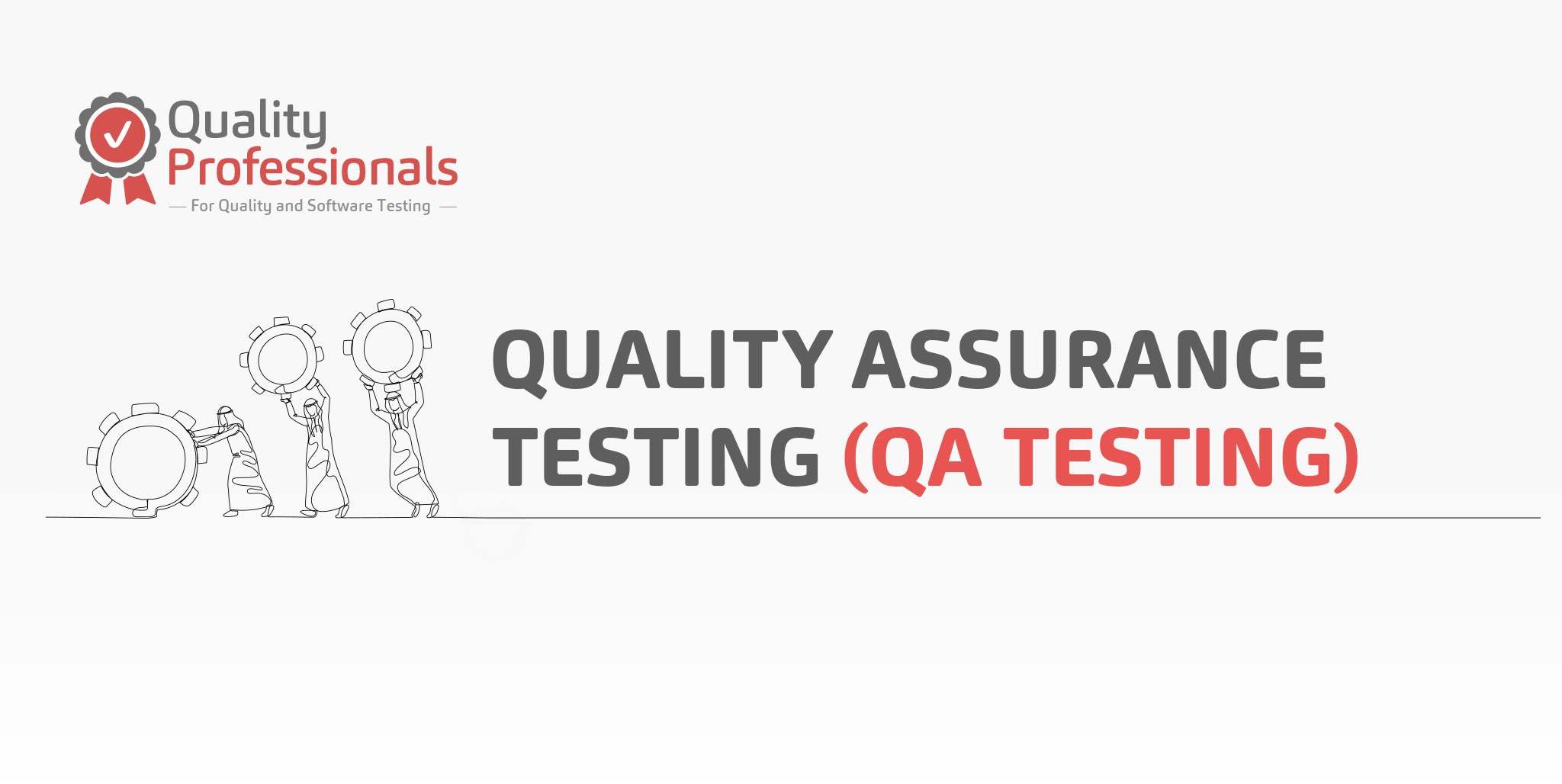
Beyond Functionality: Unveiling the Soul of Application Quality Testing
Delving into the Essence of Application Quality Testing
Application Quality Testing (AQT) is often perceived as a mere technical exercise focused on identifying and resolving defects within the dynamic world of software development. However, this narrow view fails to capture the true essence of AQT, which extends far beyond bug hunting and encompasses a holistic approach to ensuring the overall quality and user experience of software applications.
At its core, Application Quality Testing is a journey of discovery, a process of delving into the very fabric of software to uncover its strengths and weaknesses. It’s about understanding the intricate interplay of functionality, usability, performance, and user experience, ensuring that these elements harmoniously blend to deliver an exceptional application.
This shift from a reactive bug-fixing mindset to a proactive quality-driven approach represents a paradigm shift in the AQT landscape. It’s about moving beyond simply identifying problems and instead focusing on enhancing the overall user experience.
Unveiling the Multifaceted Dimensions of Application Quality Testing
The Functional Backbone: Assuring Core Functionality
The cornerstone of Application Quality Testing lies in ensuring the core functionalities of an application operate flawlessly. This rigorous process involves meticulously testing the application’s features, ensuring they meet the specified requirements and perform as intended.
Application quality testers meticulously scrutinize every aspect of the application, uncovering defects that could hinder its functionality and jeopardize the user experience. They employ a variety of testing techniques, including unit testing, integration testing, and system testing, to comprehensively evaluate the application’s behavior under different scenarios.
Performance optimization plays a crucial role in ensuring a seamless user experience. Application quality testers analyze the application’s resource utilization, identify performance bottlenecks, and implement optimization strategies to enhance responsiveness and stability under load.
The Usability Frontier: Crafting an Intuitive Interface
While functionality is essential, it’s only one piece of the Application Quality Testing puzzle. Usability, the ease with which users can interact with and navigate the application, is equally important. Application quality testers take on the role of user advocates, employing user-centered testing methodologies to understand user needs, preferences, and potential pain points.
Through user-centered testing, testers observe real users interacting with the application, gathering insights into their thought processes, frustrations, and areas of confusion. These valuable insights inform the design and usability heuristics, guiding the development team towards an intuitive and user-friendly interface.
The Performance Pinnacle: Achieving Peak Performance
In today’s fast-paced digital world, users demand applications that can handle heavy workloads and maintain stability under pressure. Application quality testers ensure that applications can meet these demands through rigorous load and stress testing.
Load testing simulates real-world usage scenarios, gradually increasing the number of concurrent users to assess the application’s scalability and identify performance bottlenecks. Stress testing pushes the application beyond its expected limits, simulating extreme usage conditions to uncover potential vulnerabilities and ensure the application can withstand unforeseen spikes in demand.
Performance optimization techniques, such as caching, resource optimization, and code refactoring, are employed to enhance resource utilization and ensure the application can deliver a responsive and consistent user experience even under peak load conditions.
Elevating Application Quality Testing to an Art form
The Role of Exploratory Testing: Embracing the Unexpected
While scripted testing provides a structured approach, exploratory testing brings a touch of creativity and spontaneity to the Application Quality Testing process. Application quality testers, armed with their experience and intuition, embark on an exploratory journey, freely navigating the application and uncovering hidden defects that might have gone undetected in scripted testing.
Exploratory testing is unstructured yet purposeful, allowing testers to adapt their approach based on their observations and discoveries. This unstructured nature fosters lateral thinking, enabling testers to identify unexpected issues and potential usability problems that might have been overlooked in a more rigid testing environment.
The Art of Automation: Simplifying and Empowering
Automation has revolutionized Application Quality Testing, simplifying repetitive tasks and empowering testers to focus on more complex and value-added activities. Application quality testers leverage automated testing frameworks to streamline the execution of test cases, enabling continuous testing throughout the development lifecycle.
Automated testing frameworks provide the infrastructure for creating and executing automated test scripts, freeing up testers from repetitive manual testing tasks. This allows them to dedicate their time to more creative and challenging activities, such as exploring new features, investigating complex scenarios, and analyzing test results to identify trends and patterns.
Continuous testing integrates Application Quality Testing into the development pipeline, ensuring that quality is embedded into every stage of the software lifecycle. By automating test execution and providing real-time feedback, continuous testing enables early defect detection, reducing the time and cost of fixing bugs later in the development process.
The Synergy of Manual and Automation: A Collaborative Approach
While automation has transformed application quality testing (AQT), manual testing remains an indispensable component of the quality assurance process. Human testers possess the ability to think critically, empathize with users, and adapt to unexpected situations, making them uniquely suited for tasks that require creativity, intuition, and adaptability.
Manual testing is particularly valuable in areas where automation is challenging or impractical, such as user interface (UI) testing, exploratory testing, and testing of complex interactions and workflows. The human element allows testers to identify subtle usability issues, uncover edge cases, and provide valuable insights into the overall user experience.
A synergistic approach that combines manual and automated testing leverages the strengths of both approaches to achieve comprehensive quality assurance. Manual testing provides the human touch, ensuring that the application is not only bug-free but also user-friendly and delightful to use. Automation, on the other hand, handles repetitive tasks efficiently, enabling continuous testing and rapid feedback throughout the development lifecycle.
Unveiling the Impact of Application Quality Testing
The Impact on User Experience: Delivering Delight
High-quality application quality testing (AQT) extends beyond the application itself, influencing the overall user experience. By delivering an intuitive, responsive, and bug-free application, AQT fosters user trust, loyalty, and advocacy. This positive user experience translates into business growth and enhanced customer satisfaction.
When users encounter an application that is easy to use, performs consistently, and is free of frustrating bugs, they are more likely to form a positive association with the brand and the application itself. This positive first impression can lead to increased user engagement, repeat usage, and ultimately, customer loyalty.
Application Quality Testing plays a crucial role in ensuring that applications meet user expectations and deliver a delightful experience. By identifying and resolving usability issues, optimizing performance, and ensuring overall stability, AQT helps to create an application that users find enjoyable, efficient, and reliable.
The Impact on Development Process: Embracing Quality
Application Quality Testing is not an afterthought but an integral part of the development process. By identifying and resolving defects early in the development cycle, AQT saves time, resources, and potential rework costs. This proactive approach promotes continuous improvement, fostering a culture of quality throughout the development process.
When Application Quality Testing is integrated into the development pipeline, defects are detected and addressed early on, before they become deeply embedded in the codebase. This early defect detection reduces the time and cost associated with fixing bugs later in the development cycle, when changes are more complex and expensive to implement.
Application Quality Testing also promotes a culture of quality throughout the development team, encouraging developers to write clean, maintainable code and adopt a quality-centric mindset. This culture of quality leads to the development of more reliable, scalable, and maintainable applications.
The Impact on Innovation: Unleashing Creativity
A robust Application Quality Testing empowers innovation by providing a stable platform for experimentation. AQT testers collaborate with developers to explore new features, test innovative concepts, and push the boundaries of application design. This collaborative approach fosters creativity and enables breakthroughs that drive business success.
With a comprehensive Application Quality Testing strategy in place, developers can confidently experiment with new ideas and features, knowing that the application’s core functionality and stability will remain intact. This freedom to experiment encourages innovation, leading to the development of groundbreaking features and functionalities that differentiate the application in the market.
Application Quality Testing also plays a crucial role in identifying and mitigating potential risks associated with new features and innovations. By thoroughly testing new concepts and functionalities, AQT helps to ensure that the application remains stable, secure, and performant, even as it evolves and adapts to changing user needs and market demands.

Conclusion
In the ever-evolving landscape of software development, Application Quality Testing (AQT) has transcended its traditional role of mere bug detection and emerged as an indispensable catalyst for crafting exceptional user experiences. By embracing the soul of AQT, organizations can unlock a world of possibilities, where applications not only function flawlessly but also resonate with users on a deeper level.
Quality Professionals, true to its name, stands at the forefront of this transformative journey, empowering organizations to harness the power of AQT and deliver software that not only meets expectations but exceeds them. Our team of seasoned AQT experts possesses an unwavering commitment to quality, meticulously scrutinizing every aspect of the application to ensure it adheres to the highest standards of functionality, usability, performance, and user experience.

